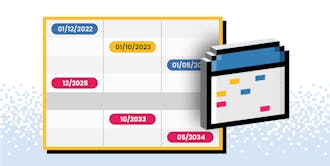Turning obsolescence into competitive advantage
August 21, 2025
Written by Robert Juricic, Managing Director of pcn.global

Robert Juricic brings over a decade of specialised expertise in obsolescence management and 30+ years of developing BoM concepts and documentation processes. Having worked with OEMs and EMS providers across five continents, Robert has a unique vantage point on where component lifecycle breakdowns typically occur, and how to prevent them before they become costly emergencies.
Drawing from his multidisciplinary background in documentation, data management, and process automation, Robert helps manufacturers transform component lifecycle management from reactive fire-fighting into a strategic advantage. Through his company's specialised obsolescence management software, services and documentation expertise (including BoM scrubbing and master data management), he enables clients to stay ahead of component change notices and build resilient supply chains.
Walk any shop floor and you’ll spot two silent killers in industrial obsolescence management: obsolete stock filling shelves and aging parts still hidden on the line. A 2024 Kearney analysis puts excess and obsolete inventory in the U.S. alone above $250 billion [1]. Meanwhile, Siemens calculates unplanned downtime draining 11%, about $1.4 trillion, from the world’s 500 largest manufacturers [2].
The trigger is often the same: a component whose lifecycle changed while nobody was looking. Yet the data that could warn you, BoM metadata, ERP events and supplier PCNs, already sits on your servers.
Here are 5 points that help you stay ahead of obsolescence surprises:
1) Elevate the BoM from list to lens
Give every component a lifecycle code, supplier road-map link, criticality score and next-redesign milestone. Suddenly, the BoM transitions from being a static record to a forward-looking risk model. This change allows finance to allocate funds for fixes before a £2 connector can disrupt a £20 million shipment.
2) Wire your ERP for automatic alerts
Manual chasing rules the day: 70% of factories still re-key lifecycle data into spreadsheets [3]. Teach the ERP to ingest Product Change Notifications (PCNs) and End-of-Life (EOL) bulletins for end-of-life parts management directly. Suddenly, the BoM transforms from a static record into a forward-looking risk model.
A rules engine funnels red parts into last-time-buy analysis. Amber parts are directed into dual-source qualification. Green parts are placed onto a watch list. This approach provides teams with weeks, not hours, to react.
3) Bake transparency into the contract
Supplier silence is optional. Insert a clause: “Supplier shall give six-month EOL notice followed by a six-month last-time-buy window.” Pair it with an API feed of PCNs so end-of-life parts management data flows in real time, moving lifecycle shifts from inbox clutter to actionable telemetry.
4) Trust AI, but only after cleaning the data
Predictive maintenance programs deliver median returns above 250% [4]. However, research cited by Gartner indicates that 85% of AI models fail due to poor data [5].
Provide your model with a BoM that includes complete part-number accuracy, live PCNs, and repair logs. It will identify risks well in advance. However, if you supply it with incomplete spreadsheets, it will only automate a state of panic.
5) Choose a partner who lives in the future tense
Even perfect foresight cannot conjure inventory. A good supplier scans global supply 247 and can source last batches, or certified refurb units, after an OEM pulls the plug. Their feed on your dashboard strips out speculation and reins in safety-stock bloat.
Take-away
Obsolescence is physics, not failure. In industrial obsolescence management, treat the BoM as a living dataset. Automate ERP signals. Have a contract in place for visibility. Let AI filter the noise. Then, backstop everything with a supplier who is obsessed with lifecycle risk.
Do that, and obsolescence becomes a planned cost instead of the surprise that stops your line.
Sources
[1] Kearney, “Excess Inventory Is a $250 Billion Problem in the U.S.”
New HBR article discusses the next supply chain challenge: excess inventory | Kearney
[2] Siemens, The True Cost of Downtime 2024
[3] Manufacturing Leadership Council, “Seventy Percent of Manufacturers Still Enter Data Manually”
4] Siemens, Maximising ROI with Predictive Maintenance
[5] Forbes Tech Council, “Why 85 % of Your AI Models May Fail”
https://www.forbes.com/councils/forbestechcouncil/2024/11/15/why-85-of-your-ai-models-may-fail/











